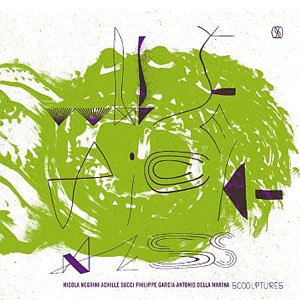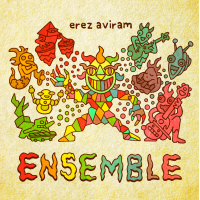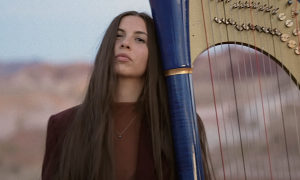Home » Jazz Articles » Interview » Jen Shyu and Theo Bleckmann: Breaking the Song Barrier
Jen Shyu and Theo Bleckmann: Breaking the Song Barrier
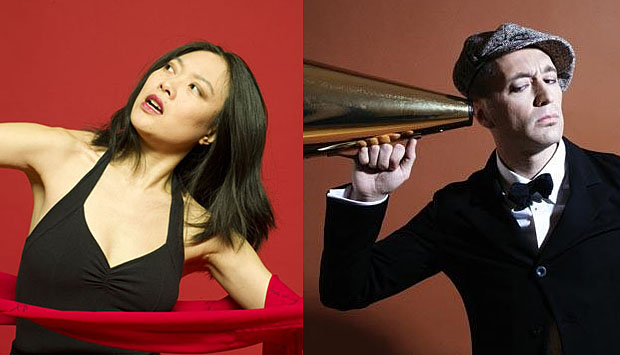
But, for what it's worth, in the course of discussion, Jen Shyu makes a distinction about the human voice. "It's lucky that the voice is part of tradition that all cultures have—which is to say, you wouldn't find an ancient saxophone song. Songs are much older; that's what humanity brought us."
Indeed, throughout much of music, be it rock 'n' roll, opera or Tibetan chant, the voice has played a very prominent role, so much so that instrumental music has become strange to the general public. Bleckmann has picked up on this, and he finds a strong connection to the audience even within the context of his famous sound improvisations. "Soon as somebody sees you making weird sounds with your voice, they can relate to it more easily than if an instrument was doing it, even if it was the same improvisation. We all make those sounds in daily life when we moan or hum or sigh." This connection to the audience is a concept that vocalists Jen Shyu and Theo Bleckmann have used masterfully over their working careers.
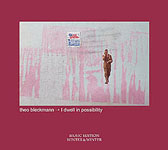 Bleckmann recently paid tribute to a childhood musical icon of his, Kate Bush, among other diverse projects. "I just finished recording the Kate Bush project, and I'm working on orchestrations with the Ossia Symphony. I'm also working on a liederabend at The Kitchen; it's three days of songs." Beyond his lyric-oriented work, Bleckmann had just recently come off a West Coast tour with the John Hollenbeck Large Ensemble. His activities aren't just limited to records, either. The makers of the movie Hoodwinked Too! Hood vs. Evil approached him to do a yodeled version of "Kung Fu Fighting." This isn't Bleckmann's first involvement with Hollywood: in 1997, the makers of Men in Black approached him to create an alien language.
Bleckmann recently paid tribute to a childhood musical icon of his, Kate Bush, among other diverse projects. "I just finished recording the Kate Bush project, and I'm working on orchestrations with the Ossia Symphony. I'm also working on a liederabend at The Kitchen; it's three days of songs." Beyond his lyric-oriented work, Bleckmann had just recently come off a West Coast tour with the John Hollenbeck Large Ensemble. His activities aren't just limited to records, either. The makers of the movie Hoodwinked Too! Hood vs. Evil approached him to do a yodeled version of "Kung Fu Fighting." This isn't Bleckmann's first involvement with Hollywood: in 1997, the makers of Men in Black approached him to create an alien language. "I got a call asking if I would come into the studio to improvise for half an hour. I was asked to read along with the script to do the sound of the alien in some improvised language. I did about six takes. The only stipulation was that it couldn't be too crazy since the actor would have to mouth along with the audio. When I read and improvised along to his one scene, I thought to myself that it would be the worst movie ever. Someone's head opening up and out pops an alien—that's not even B-movie material! I'd go much further down the alphabet for this one. I thought that it was going to be the one movie that people wouldn't talk about regarding Spielberg's career, but it turned out to be a great movie!"
Shyu has also been keeping busy, releasing her third album, Synastry (Pi Recordings, 2011), with bassist Mark Dresser, the first album released on Pi not only by a vocalist as bandleader/co-leader, but also by a female artist. She's been busy forging a new frontier, both in her improvised sung narrative and her sonic capability. She's composing and performing the music for a dance theatre piece with theatre artist Soomi Kim, based on Dictee by the late Korean author Theresa Hak Kyung Cha, to be premiered in Los Angeles at the third National Asian American Theatre Festival in June. As preparation, she does her research: "I'm taking P'ansori lessons, which is epic narrative folk singing from Korea. It's very demanding; real singers in this art form actually develop calluses in their throat. Whenever I think something is out of my chest range, my teacher just tells me, 'No, you just have to open up more.'"
Being voice-oriented musicians, Bleckmann and Shyu have been granted freedom of lyrical expression. However, each musician takes to lyrics in a different way. "I don't use language all that much," says Bleckmann. "I do work with lyrics, with the Bertolt Brecht stuff and English lyrics like Charles Ives, but I wouldn't call myself a lyric- oriented person. I don't use lyrics in my improvisation; my improvisations are much more sound-oriented. I have used poems when I write music, and they're usually very short. Shelly Hirsch, a wonderful vocal improviser, is very fluid using language as an improvisational tool, but that's not my thing."
Shyu's improvisations include language in a much more stream-of-consciousness way. "I like to use languages just to throw things in there. Some of what I do is creating a language that sounds like one, but isn't."
For Bleckmann, language adds another depth to the music itself. "When I sing language, it becomes even more juicy. I become more mindful of the type of song I'm singing. Oftentimes, I find the lyrics get in the way. I don't listen to lyrics the first time I hear a song. Sometimes it takes me three or four times to fully absorb them. Regardless of language, I just hear melody, rhythm, harmony, timbre, et cetera. Lyrics are a third or fourth layer, so it has to be very close to my heart."
 What has tied Shyu's and Bleckmann's works together is their use of wordless singing. Between Bleckmann and Shyu, there are many influences to be counted, ranging from Charlie Parker to Gyorgi Ligeti. Some of these include vocal improvisers like Sarah Vaughan and Ella Fitzgerald, but what has separated Shyu and Bleckmann from other vocalists is their nuanced approach to the vocal sounds themselves.
What has tied Shyu's and Bleckmann's works together is their use of wordless singing. Between Bleckmann and Shyu, there are many influences to be counted, ranging from Charlie Parker to Gyorgi Ligeti. Some of these include vocal improvisers like Sarah Vaughan and Ella Fitzgerald, but what has separated Shyu and Bleckmann from other vocalists is their nuanced approach to the vocal sounds themselves. At a certain point, Shyu felt the need to find something different. "I wanted to find something more than the already-established scat vocalizing. I didn't really want to do that. I had heard that style, but I wasn't interested in reproducing it. When I started working with Steve Coleman, I was coming from classical training, so I copped a lot of saxophone lines, mostly from people like Bird, but he had me learn solos of master improvisers like Von Freeman and Art Tatum. It was like schooling. I use very different syllables, mainly inspired by my research of indigenous music from various places, and I had to find different ways to utilize them other than just going 'da-ba-da-ba-da,' which wasn't enough to sing those fast and complex lines."
"I almost never pre-plan syllables, they just sort of come out," says Bleckmann. "I have a subtext that I use when I'm singing without a lyric. I agree with Jen about not copping scat syllables; I think they're distracting and very annoying. It's something I urge my students not to do. If my student sings something like 'shooby dooby,' I tell them they absolutely cannot do that. What you're singing, whether it's an 'ah' or an 'ee' or a 'doo,' it does mean something—it has some kind of an emotion. For me, the syllable just comes out of the emotional context. If it's lighter, I might not use a consonant, but I might use one if I want it to be percussive. It's also a choice whether I want to be unobtrusive or if I want it to stick out. Lyric or no lyric, the intention is still there."
Shyu considers a very worldly phenomenon about the listener's perception of vocal syllables. "Whatever syllable I'm singing does mean something in some other language—for example, 'ma.' That's why I like to slip into other languages—because I know someone out there speaks that language, maybe not in the room, but somewhere in the universe."
Bleckmann makes light of a very unfortunate choice of scat syllable: "I heard a recording of a very well-known singer who was scatting on the syllable 'shit.' It was out on a major label. Nobody noticed it; nobody told her!"
Bleckmann and Shyu have mostly been working in separate contexts, but their paths did cross when working on Steve Coleman's Lucidarium (Label Bleu, 2005), featuring other vocals by Kyoko Kitamura, Judith Berkson, Lorin Benedict, and freestyling from Koyaki. As it was Bleckmann and Shyu's first engagement with Coleman's music, there was a lot to explore.
"It was based on a retuned scale," Bleckmann explains. "Ten pitches instead of 12. As an ensemble, you had to get used to each other with this retuned scale, so it took a while to maneuver around this brand-new music. Everybody was struggling. It reminded me of working with Anthony Braxton, where the struggle was built in, so I wasn't too freaked out by it."
Shyu describes the process in which it was learned. "We broke it down into five tones to learn it. So each step was less than a minor third but more than a half step. It would be approximately something like a C, a very sharp D, a very flat F# and then a slightly sharp G#, then a flat B-flat."
Bleckmann explains, "You would just negotiate to see if you would agree on something."
Chapter Index
Finding a Voice
The two vocalists' arrival at working with avant-garde and highly complex music is a long journey from childhood to the present day, filled with varied experiences and initial exposures. Bleckmann's initial exposure to music and performing started early. "In childhood, it was anything I heard as a kid: children's choirs, kids' records, classical music, et cetera. I was a boy soprano, and I was a soloist in a children's choir. My musical education was on guitar (around six) and piano (around 10). After that, I was listening to classical music and popular music, and at 16, somebody in my class introduced me to jazz. I really discovered it through the '60s and '70s free stuff: Albert Ayler, late Coltrane, et cetera. I branched out into both directions from that era, both the older stuff and newer artists like Kenny Wheeler, and I also got into some vocal music through that. I started taking non-operatic voice lessons when I was 18. I first studied with jazz singer Silvia Droste in Germany—mostly standards and some bebop, just to learn the technique and learning repertoire. I've never had any classical voice training; I was never interested in the operatic singing voice for my own sound."
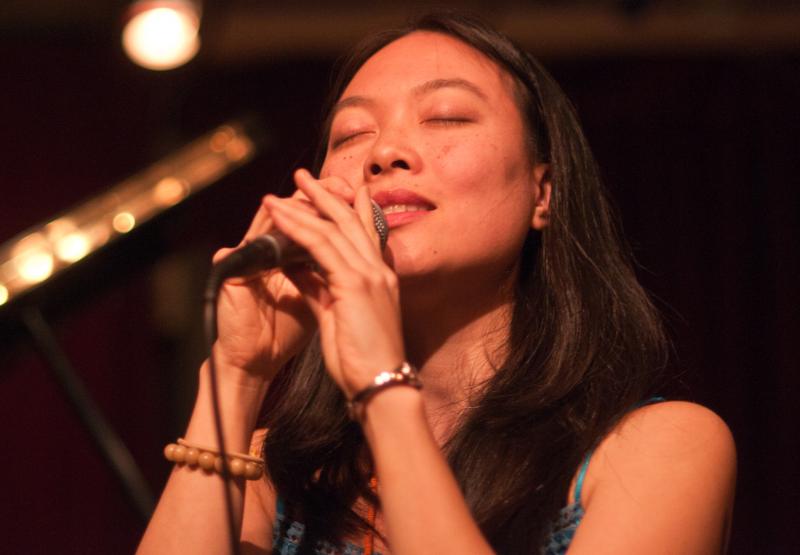
Shyu's main exposure to performing came through dance and musical theater, but Shyu's childhood in the Midwest provided some obstacles. "I had already trained in ballet, piano, and violin, so music was there and the desire to be on stage was strong. Singing didn't come until much later, because I was so shy and the whole racism aspect was there. I was growing up in Dunlap, Illinois, in a kind of colorless high school where there wasn't really an understanding of where my parents or I were from. Trying to assimilate made it an interesting time. Even talking out loud was really terrifying. But it was musical theater and also the songs on the radio that I started to imitate—I remember Natalie Cole's version of 'Unforgettable' was always on. Musical theater led me to tunes that would be considered standards: people like Gershwin, Cole Porter, et cetera. I was kind of a musical theater nerd: Andrew Lloyd Webber, Miss Saigon, A Chorus Line, et cetera." Like Bleckmann, Shyu gravitated away from the operatic sound. "I started taking classical voice lessons in high school, around 14. I always felt that wasn't my real voice. I used more of my natural voice when I was doing musical theater."
Musical theater was an important medium for Bleckmann as well. For a native German speaker, televised musicals were an interestingly bilingual experience. "A lot of music you'd hear would be in English. I would watch a musical on TV, and the dialogue would be in German and the music would be in English. You wouldn't even think about it, because to you, that's what musicals are. I was addicted to those."
Shyu's linguistic story is different. "My first language was English. Mandarin was the language in my house; my parents spoke it to each other, but didn't force it on me. We did go to Chinese school once a week, but then all the lessons and rehearsals had taken over. I've been taking great pains to learn conversation; I'm fluent on a basic level or a little more. I can speak Spanish, which I studied in high school. Portuguese came later and Tetum most recently."
Introductions to singing and improvising for Shyu and Bleckmann came with regards to both culture and time. "When I was growing up with vocal jazz in the '80s, it wasn't like it is today, where there are a lot of jazz vocalists," recalls Bleckmann. "A lot of schools today have vocal jazz programs, but at that time, there weren't. There were people like Al Jarreau and Jay Clayton and Laura Newton and a few of the old guard, and that was it. So that wasn't really that much on the radar. Getting into contemporary classical, like Cage, Ligeti, Stockhausen, I was exposed to a lot of very odd vocalizations, maybe odder than jazz. It was all coming to me at the same time. And then of course, I was introduced to people like Bobby McFerrin's music, which opened up a lot of doors. I was into more of the weirder, more offbeat vocalists like Eddie Jefferson, Jon Hendricks, Norma Winstone, Sheila Jordan, et cetera."
Shyu found improvisation through both a musical and cultural community. "I first started improvising in a community context in San Francisco. It was an Asian improv community; there's actually a label for it in the Bay Area with Francis Wong. Vijay Iyer and I have talked about that kind of nurturing from these kinds of gatherings, like a salon. It would be everyone from every sort of color, class, tribe, et cetera, and we'd just improvise, either solo or collaboration. By that time I learned a few standards, and they encouraged me to open up with them and draw upon my ancestry." Shyu continues to do so to this day, preparing to leave in October on a Fulbright grant for 13 months to study sindhenan, the improvisational singing of Javanese gamelan music, in Indonesia, where her great-great grandmother was born. "Steve had sort of given me a lecture encouraging me to go to Taiwan, because I had talked about wanted to learn some of the folk songs there. I did exactly that and then went to Cuba to check out the Chinese-Cuban community before the Lucidarium recording."
Interaction
Shyu and Bleckmann have gained notoriety for their continuous collaborations with certain jazz artists. For Bleckmann, one of his longest engagements is with guitarist Ben Monder. Critics and fans have lauded the duo's work for its sonic ferocity, rhythmic and harmonic intricacy, and for their bold and enterprising take on jazz and rock favorites. Bleckmann can be heard on Monder's Oceana (Sunnyside, 2005) and Excavation (2000, reissued by Sunnyside in 2006) and on their co- releases No Boat (Songlines, 1997) and At Night (Songlines, 2007).
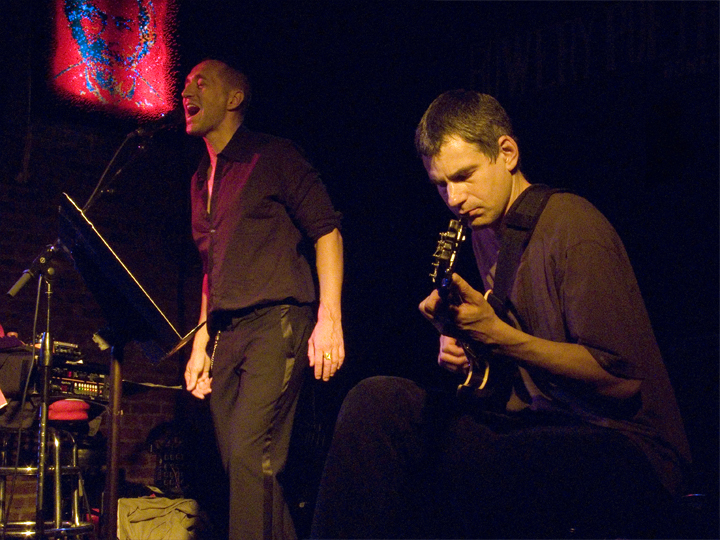
From left: Theo Bleckmann, Ben Monder
On his collaboration with Monder, Bleckmann recalls: "I first heard him in Pat Zimmerly's band in 1994; he had a group with Ben. I was completely into what he was doing, specifically interested in what he was doing sonically—the sounds he was making. I called him for a gig, and it was clear in the first rehearsal or so that there was a lot of synergy between us. We've been working in duo and quartet since then. It's a good combination because we complement each other in a weird way. I do things that he wouldn't normally consider and vice versa. That's really important, because it allows us to grow. There's enough rub there. For instance, Ben introduced me to Meshuggah, and as much as I hate death metal, I think they're incredible. And I might introduce Ben to someone like Kate Bush. I bring something to the table and he brings something to the table."
Shyu's longest-standing engagement to date has been with Steve Coleman and Five Elements. Tenure with this band is not something to take lightly; it's an extraordinarily challenging gig that has involved the likes of Robin Eubanks, Cassandra Wilson, Dave Holland, Gary Thomas, Gene Lake, Geri Allen, Ambrose Akinmusire, Ravi Coltrane and many others. Coleman has used vocals before, but Shyu's timbral sensitivity, linguistic and faux-linguistic capabilities and her tremendous aural faculty have made her an incomparable and instantly recognizable part of Five Elements. Her talents are showcased on Weaving Symbolics (Label Bleu, 2006) and Harvesting Semblances and Affinities (Pi Recordings, 2010).
"I knew [drummer] Dafnis Prieto first, and that's how I met Steve, who was just putting together his Lucidarium project and was looking for vocalists. Having just moved to New York, I was the most available in filling that role for his group. It's like being any other instrumentalist, learning all the parts, having different people come through. What's great is, you develop this entire repertoire. The way Steve runs his gigs is that we don't know what the set list is going to be, we just have all this music at our disposal. The focus is on improvisation and, from my perspective, being conscious of tone and timbre. Our external focus is on harmony, rhythm, melody, et cetera. There isn't a stand-alone piece, for example, where we focused solely on timbre. A lot cross-rhythmic concepts—that's a core part of it."
Shyu and Bleckmann have both been getting around the scene for more than these engagements, though. Shyu has recorded with Miles Okazaki, Bobby Previte, Taylor Ho Bynum and Anthony Braxton in his opera Trillium E. Bleckmann has had a prolific career in collaboration with John Hollenbeck and Gary Versace in Refuge Trio, and as a sideman in Hollenbeck's various bands, including his Large Ensemble. These are gigs that demand a different level of involvement than the "singer in front" way of presentation; it's the task of blending a voice like an instrument. But one thing needs to be made clear: Theo Bleckmann is not trying to imitate an instrument.
"I've never practiced sounding like an instrument. I think you [Theo] can," says Shyu, to which Bleckmann immediately counters, "That gives me the shivers. I never, ever, ever want to sound like another instrument. I refuse to. I want to sound like a voice. I think to do that is a step backwards; it's putting you second to the instrument. I'd rather hear a trombone play like a trombone."
With that established, the two then give their insight into singing with an ensemble. Says Bleckmann: "If you're singing with an instrumental ensemble like John Hollenbeck's band, the syllable is determined by how it best blends with the horns: the differences between singing with the trombones or the trumpets, for example."
Shyu states, "For me, blend is mostly intuitive."
 Solo
Solo Bleckmann and Shyu have also made strong creative statements while playing alone. In 2010, each artist released an album featuring only themselves and an array of toys and instruments. Bleckmann's I Dwell in Possibility (Winter and Winter, 2010), recorded in the echoy acoustics of a Swiss monastery, is an album that blends sublime austerity, imaginative mystery and effortless virtuosity, utilizing instruments like autoharp, zither, shaker, toy megaphone and Indonesian frog buzzer for Bleckmann's own compositions, along with interpretations of Meredith Monk, Supertramp and James Taylor. Bleckmann has been working with what the AACM called "little instruments" for quite some time, and he has built a concept around it.
"There are two things that I'm using presently: live electronic processing—things like stomp boxes, loops, et cetera—and then things like toys. They're very cheap, mostly dollar-store-type items. The most important part for me in using these things is that the audience is involved in the sounds I'm making. I'm not singing into a laptop and then another sound comes out; I want the audience to experience the change of sound in front of them and see it. That's why I still use antiquated looping devices—because you can see clearly what's going on. With the toys, things like megaphones and plungers, it's right there and the audience can easily perceive it. It has a theatrical aspect to it that I find important in my work. I started doing it in the '90s when I bought one of the first loops. The toys came out of work with John Hollenbeck; he had already been working with toys. It's something that I cultivated for my solo performances."
Shyu's solo album, Inner Chapters (Chiuyen Music 2010), is another culmination of sorts, resulting from her research in Cuba, Brazil, Taiwan, and China. The finished project is a diverse and almost startling collection of multicultural folksongs and modern jazz tone poems, with tracks such as "Qemaiaqaiam (Women Sing)" that bristle with unfettered, raw energy. The album also features a number of instruments played by Shyu, including piano, a two-stringed, banjo-like moon lute and two-stringed, violin-esque erhu. Shyu's current involvement in solo performance comes out of both musical vision and necessity.
"I've just started to do solo performances as of recently. A few years ago, I was just sharing my research that I had collected for Taiwanese American community centers, and it was all very functional within the community. I was talking about my experiences and drawing in people my age. I was afraid to do that kind of thing in New York as opposed to San Diego. At some point, I wanted to do something more than arrange a folk song. I was actually trying to song-write. The other instruments came out of the limitations of getting a band together. Sometimes it's just easier to do solo. The solo performances also allow me to work on my weaknesses, like singing and improvising one line while playing other contrapuntal lines in each hand on the piano. I'm also writing new music on the instruments. With the moon lute, even in Taiwan, they're just playing it in this very traditional way, but there's so much more than can be done with it, especially with the tuning and strokes. I'm not quite there with the electronics."
To this, Bleckmann wryly comments: "Don't do it. It's such a drag to schlep all that equipment around the world!"
Shyu has also brought her conception to the New York scene in quartet format. Rounded out by alto saxophonist David Binney, drummer Dan Weiss and bassist Thomas Morgan, Shyu's Jade Tongue introduces the aspect of interplay to an already-complex structure of storytelling and improvisation. The quartet performed at the 2011 Winter Jazzfest (with John Hebert subbing on bass) in a singular, multi-layered performance.
Breaking down her process beginning from her first inspiration for improvisational storytelling, Shyu says: "First, I want to talk about my friend Kokayi. He's a great free-stylist and a true rapper. I picked his brain after meeting him through Steve, and he encouraged me to start improvising against a pulse about objects around me, just to practice creating a story. What I've loved to do recently is create harmonic structures, inside of which I can improvise voice-leading lines where a saxophonist might improvise, but I'm attaching text to these lines in an organic way. So at Winter Jazz fest, it was about Chinese laborers in Cuba. I found this text years ago, in my studies, and I decided that it needed to be heard by people other than academics and anthropology students. I would sing a phrase, and Dave Binney would react to it, so it's improvisation but there's structure, harmony, and the rhythm is precise. The drum chant came from the text also."

Jen Shyu and Jade Tongue, from left:
Jen Shyu. Thomas Morgan, Dan Weiss, David Binney
The written narrative entwined into the performance is crucial, but it's not mandatory for the Jade Tongue musicians to be in lockstep with the original intention. "Danny [Weiss] is very deep; there are not a lot of musicians like him on the scene. But I tend not to talk to the band too much about what one song means or the other. I like to have different perspectives on each piece. If they're interested, I'll share with them. Thomas Morgan is always very curious; he's very into languages and taught himself Esperanto, for example."
Practice and Technique
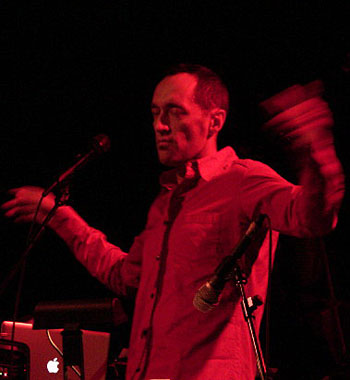 For vocalists, there are many things to consider when it comes to the woodshed. Daily practice is as important for them as it is for any instrumentalist. When engaged in as many projects as they are, the chief focus is on range and balance. Similarly with brass players, stamina and manageable organization of energy is key.
For vocalists, there are many things to consider when it comes to the woodshed. Daily practice is as important for them as it is for any instrumentalist. When engaged in as many projects as they are, the chief focus is on range and balance. Similarly with brass players, stamina and manageable organization of energy is key. "A lot of it is keeping my voice balanced," said Bleckmann. "It can fall out of balance very quickly. For example, when work with Ben, he writes very high. He likes that very high falsetto, so I have to work on being able to return comfortably to my chest voice. If I'm working on something very high, I also have to work on something very low so I don't lose the rest of my voice. I do sort of like what a decathlon runner would do. It's not marathon running or vault jumping or anything specialized, but it's all-encompassing. I can do multiple things reasonably well, but not on the level of, say, a male soprano or a Broadway belter."
"I'm trying to find a good regimen," explains Shyu." I usually do what I tell my students to do—things like interval work, just limiting myself to improvising in certain intervals. Then I'll do things like manipulate and augment the intervals and do sorts of variations. I also utilize the classical warm-ups. The breath is very basic, but it's very essential. I agree with Theo, it's about keeping your range. When I was doing opera, I had a nice shimmer in my chest voice, but since I've tailed off from doing that, I've lost some of that shimmer. Different parts of your range affect all parts, so I'd like to be more disciplined."
Technique is an important part of their repertoire, but for Bleckmann, there is no differentiation between what is extended technique and what is standard. "When I started to catalogue my vocal techniques a couple of years ago, sort of a tree, making sounds and then five variations of that sound, I realized that at some point, there's no difference between regular singing and extended technique. Like, an 'ah' is as much of a sound as something crazier, like overtone singing. For me, there's no distinction between holding a note on an 'ah' versus someone doing a fast, double-tonguing improvisation. If you have a command of your technique, that's all part of it. Singers sometimes just settle in on something they can do really well and then get too comfortable."
Shyu has the same type of all-encompassing view of technique, in that it's all part of the search to become a whole musician. "I think the broader your technique is, the more freedom of expression you have. I think that's something we'll probably be searching for, the rest of our lives. You just want to push the limits, no matter how foreign. If I'm attracted to something, I'll go for it. I think about the technique in context, how I can use it in a meaningful way, not just an imitative context."
 Integration
Integration Singing alone is not even the full extent of what can be done on stage—aspects of dance, poetry and theater have introduced themselves into Shyu and Bleckmann's work. For Bleckmann, the importance of this synthesis of different mediums came through legendary vocalist Meredith Monk. Bleckmann fondly recalls Monk's influence on him. "Meredith was very instrumental in shaping my idea of sounds and how to use them. It was a lot about connecting sounds, not just making them. A lot of the process was very much a gesamtkunstwerk [synthesis of many different artworks]—working with body, movement, occasional texts, lights, other instrumentalists, et cetera. That was important as a spiritual practice as well as a vocal practice. It was very similar to how Pina Bausch used to work. It would focus on the performer; Meredith would create material that was specific to my vocal/physical idiosyncrasies. It's a much more rock-'n'-roll way of working than the classical approach. We would work for a very long time and sometimes very painstakingly, maybe a year for each piece, but it was an intricate collaboration. That's a way of working that I like, which is why I keep the people I work with around for a while—like Gary, John, Ben, et cetera. It's more rewarding than just sleeping around in other people's bands.
"There was a point in time in my life where I was learning a lot of people's music, and you would practice it by yourself for months and perform it once, maybe twice. You might do a recording, probably not, and that would be it. That's not what I want to do; I want to create something that has an afterlife. If it does, then I'll put in that kind work."
In discussing Meredith Monk, Shyu recalls another instance in which she and Bleckmann crossed paths: "I actually met [Bleckmann] at Stanford when [he was] performing with Meredith. That was the first time I'd heard about Meredith Monk. I was involved with dance at the time also. I was trying get these students to these workshops; we had a very small group of performance majors in our music department. Meredith said I had a very good ear, and that was a huge deal. And with dance, it was the first time I had seen something as integrated as that."
"It's not as separated as a lot of Western music is," Bleckmann explains. "Western tradition usually deals with just singing or just playing an instrument. This way of working was more like African tradition or other folk tradition. There's no separation; it's just one. A lighting cue could be a music cue or a music cue could be a set cue. Everybody has to know everything. The stagehands would have to know some of the music to be involved. It's tricky. There is improvisation, but based on very narrow margins, which is great to work with, to put oneself into the discipline to only work on the rhythm of one note or the timbre of that note. You have to go into a very small capsule, and then you realize the power of that universe in that one note. Any instrument, not just a vocalist, could be a part of it. It can be a drummer or a dancer or anything."
Shyu's performances, both solo and with a group, have included dance as an indispensible part of the act. "I heard Woody Shaw used to do tai chi, sometimes on stage. But integration is the key. I think Meredith was the catalyst of integrated dance for me. I won't do it if I'm hired to just sing. Of course, I think if I started dancing on stage with Steve, he'd probably have a fit. But for the most part, [in] the work I do with others, they'll know that I'll start moving or dancing. If you think of it just as a jazz vocal thing, you're limiting yourself. If you've ever been to a punk rock show or a metal show, they're doing all sorts of movement."
Though he doesn't do as much dance anymore, Bleckmann has a strong background in dance, placing as a junior champion ice dancer before pursuing music. "I think that the integration of the body is very important. That's something that I teach a lot, and that's what I see missing. I say that if it's not in your body, it's nowhere. It's not just playing intervals or counting to 13. It has to really move you and touch you, and that's really impossible to do if it's just in your brain. We're very disconnected with our bodies. There's no common practice of movement or tai chi; we just end up connected to our computers or our phones. I think dance should be mandatory for all musicians."
Jazz Voice in the Present
Between creative artists like Bobby McFerrin, Mark Murphy, Jon Hendricks and Cassandra Wilson, the future of jazz voice is secure in its professionals, but in regards to students, there may be a gap in the sort of creative fervor that drove the aformentioned artists. Despite the continued expansion of jazz vocal programs, there hasn't been an influx of great vocalists onto the scene, like there has been with young saxophonists or pianists.

Theo Bleckmann with trumpeter Avishai Cohen
This may be partly due to the prevailing attitude, as Bleckmann observes: "I think jazz voice has become so tame and afraid. I just want to shake some people up sometimes. We've become so set in our ways: 'We're going to do these standards, then one Wayne Shorter tune, a Bossa, a vocalese et cetera, et cetera.' I encourage my students to listen to all kinds of music: new music, heavy metal, folk music, Korean music, whatever—to not get stuck in just singing jazz. Just because I'm teaching at Manhattan School of Music doesn't mean you have to be a bebop singer. It's even narrow within that field."
Shyu echoes these concerns: "Categorization can be a dangerous thing. We have to be careful about it as educators and try to destroy those as much as possible. If students are coming to us, that means they're listening, but we have to keep encouraging them to listen."
In Bleckmann's view, the talent may be there, but the power of the forbearers is missing. "I hear a lot of female students in the auditions who want to sing like little girls. They may not even want to, but they don't know how to do it differently. I think there's something in our culture, and in jazz, where the women have to be very little and light. When I think back to Carmen McRae or Betty Carter, these were big, sweaty women. They were not afraid to really put it out—especially the photos you see of Ella just sweating and giving it her all. They were not afraid to be adults. We're in a state where a lot of the female vocalists are very powerless, and if they are powerful, they have to be sexy about it. For every person that comes to Jen or myself, there are a hundred people who have never even heard of Betty Carter. Those people might never have access to that."
There is a bit of an uplifting trend occurring, however. At the 2011 Grammy Awards, vocalist/bassist Esperanza Spalding won the award for Best New Artist, beating out superstars like Justin Bieber and Drake. Prior to this honor, Spalding had just released her album Chamber Music Society (Concord, 2011), which prominently features wordless vocalisms, whereas her previous release had been very lyric oriented. For Bleckmann and Shyu, the effort is appreciated, but the timing is coincidental at best.
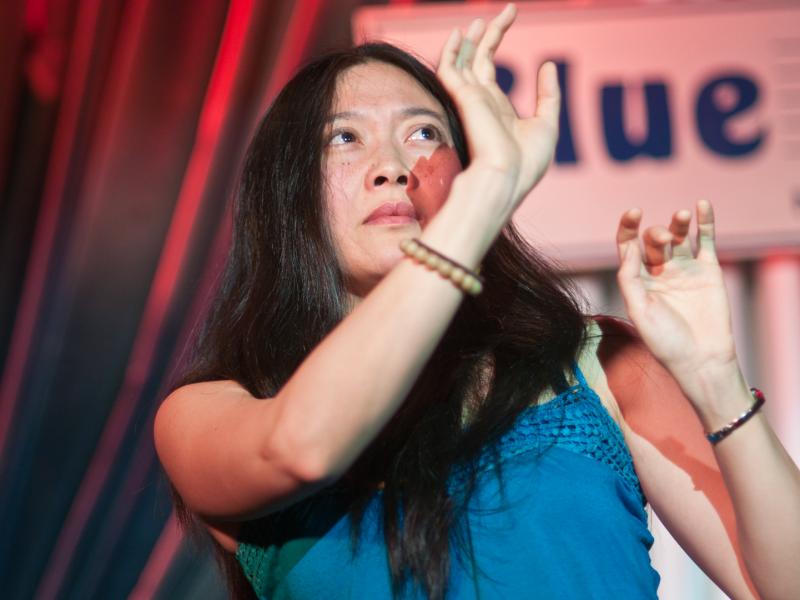
"First of all, I love Esperanza and Chamber Music Society," says Bleckmann. "I was very happy to see her even nominated." On the decidedly less commercial nature of the record, he comments, "When you're trying to make something commercial, it usually fails. When you're doing your own music, it just falls into place. You don't even think about how it's going to be perceived. The fact that people want to hear something different and not the same formula—it's very encouraging. It's a very beautiful record, very fine, very lush. That's maybe telling that people aren't looking just for the typical singer that fronts the band."
Shyu adds, "It was kind of coup. The face just changed a little bit. But again, I think if you're doing any pursuit to make money, it's going to suffer."
Jen Shyu and Theo Bleckmann are continuing to push the boundaries of repertoire, sound and musical conception. In the atmosphere of new jazz and creative music, there is no shortage of want or need to include as many sounds, sights and attitudes as possible. As long as jazz stretches itself to find continuous inspiration, and as long as there are vocalists like Bleckmann and Shyu willing to be participants, this idiom will have a longstanding place in jazz culture. As Shyu puts it, "It is only the mind that limits a person, not the instrument."
Selected Discography
Theo Bleckmann, I Dwell in Possibility (Winter and Winter, 2010)
Jen Shyu with Steve Coleman, Harvesting Semblances and Affinities (Pi Recordings, 2010)
Jen Shyu, Inner Chapters (Chiuyen Music, 2010)
Jen Shyu with Positive Catastrophe, Garabatos Volume One (Cuneiform Records, 2009)
Theo Bleckmann with John Hollenbeck Large Ensemble, Eternal Interlude (Sunnyside, 2009)
Jen Shyu with Miles Okazaki, Generations (Sunnyside Records, 2009)
Theo Bleckmann and Kneebody, Twelve Songs by Charles Ives (Winter and Winter, 2009)
Theo Bleckmann with Refuge Trio, Refuge Trio (Winter and Winter, 2009)
Jen Shyu & Jade Tongue, Jade Tongue (Chiuyen Music, 2008)
Theo Bleckmann / Ben Monder, At Night (Songlines, 2007)
Jen Shyu with Steve Coleman & Five Elements, Weaving Symbolics (Label Bleu, 2006)
Theo Bleckmann with Ben Monder, Oceana (Sunnyside, 2005)
Jen Shyu with Steve Coleman & Five Elements, Lucidarium (Label Bleu, 2005)
Theo Bleckmann with Ben Monder, Excavation (Sunnyside, 2000)
Visit Jen Shyu and Theo Bleckmann at All About Jazz.
Photo Credits
All Photos of Jenny Shyu: Dave Kaufman
Theo Bleckmann, pages 1, 4: Simon J. Harper
Theo Bleckmann, page 3: Scott Friedlander
Theo Bleckmann, page 5: Dave Kaufman
Tags
Theo Bleckmann
Interview
Daniel Lehner
United States
Jen Shyu
John Hollenbeck
Mark Dresser
Charlie Parker
Sarah Vaughan
Ella Fitzgerald
Steve Coleman
Von Freeman
Art Tatum
Kyoko Kitamura
Judith Berkson
Albert Ayler
Kenny Wheeler
Natalie Cole
Cole Porter
Al Jarreau
Jay Clayton
Bobby McFerrin
Eddie Jefferson
Jon Hendricks
norma winstone
Sheila Jordan
Vijay Iyer
Ben Monder
Robin Eubanks
Cassandra Wilson
Dave Holland
Gary Thomas
Gene Lake
Geri Allen
ambrose akinmusire
Ravi Coltrane
Dafnis Prieto
Miles Okazaki
Bobby Previte
Taylor Ho Bynum
anthony braxton
Gary Versace
Meredith Monk
James Taylor
David Binney
Dan Weiss
Thomas Morgan
John Hebert
Woody Shaw
Mark Murphy
Wayne Shorter
Carmen McRae
Betty Carter
Esperanza Spalding
PREVIOUS / NEXT
Support All About Jazz
 All About Jazz has been a pillar of jazz since 1995, championing it as an art form and, more importantly, supporting the musicians who make it. Our enduring commitment has made "AAJ" one of the most culturally important websites of its kind, read by hundreds of thousands of fans, musicians and industry figures every month.
All About Jazz has been a pillar of jazz since 1995, championing it as an art form and, more importantly, supporting the musicians who make it. Our enduring commitment has made "AAJ" one of the most culturally important websites of its kind, read by hundreds of thousands of fans, musicians and industry figures every month.



